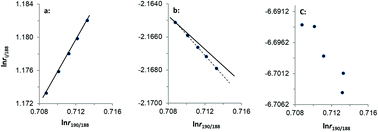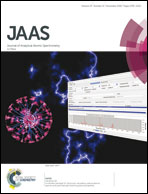A critical review on isotopic fractionation correction methods for accurate isotope amount ratio measurements by MC-ICP-MS
Abstract
Multicollector inductively coupled plasma mass spectrometry (MC-ICP-MS) is a powerful research tool for obtaining accurate and precise isotope amount ratios in a wide range of applications. Compared to thermal ionization mass spectrometry (TIMS), MC-ICP-MS suffers from much larger isotopic fractionation/mass bias. In addition to the commonly believed mass-dependent fractionation (MDF) phenomenon, recognition and reporting of mass-independent fractionation (MIF) within MC-ICP-MS itself has proliferated in the last decade. Traditional isotopic fractionation correction models, such as the widely used exponential and Russell laws, were designed to account for the mass-dependent fractionation as a function of nuclide mass. The latest findings of MIF within MC-ICP-MS itself have a significant impact on the choice of these isotopic fractionation correction models, as the use of mass-dependent models to correct for instrumental bias for isotopes which display mass-independent fractionation would result in biased isotope amount ratios. This review focuses on the latest developments related to isotopic fractionation and its correction models for MC-ICP-MS, and the implications of MIF within MC-ICP-MS on several popular mass bias correction models for obtaining accurate isotope amount ratios by MC-ICP-MS are discussed in detail.

- This article is part of the themed collection: Recent Review Articles


 Please wait while we load your content...
Please wait while we load your content...